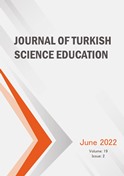Engineering and Science Faculty Students Perceptions Regarding Learner Autonomy
Keywords:
Engineering students, science students, learner autonomyAbstract
The objective of the current study is to investigate the autonomy of learners among engineering and science students at the Hashemite University in Jordan and to define whether there are statistically significant differences in the levels of learner autonomy due to variables of gender, faculty, and academic level. The participants of the current study consisted of 433 undergraduate students at the Hashemite University, the dual-faculty sample was chosen using the purposive sampling method, and the Autonomous Learning Scale (ALS) was also used. The results of the study showed that the level of learner autonomy was medium, and found no statistically significant differences in the level of academic self-efficacy attributed to students’ gender and academic level. However, the results of the study showed statistically significant differences in the levels of learner autonomy attributed to students’ faculty in favor of science students.


